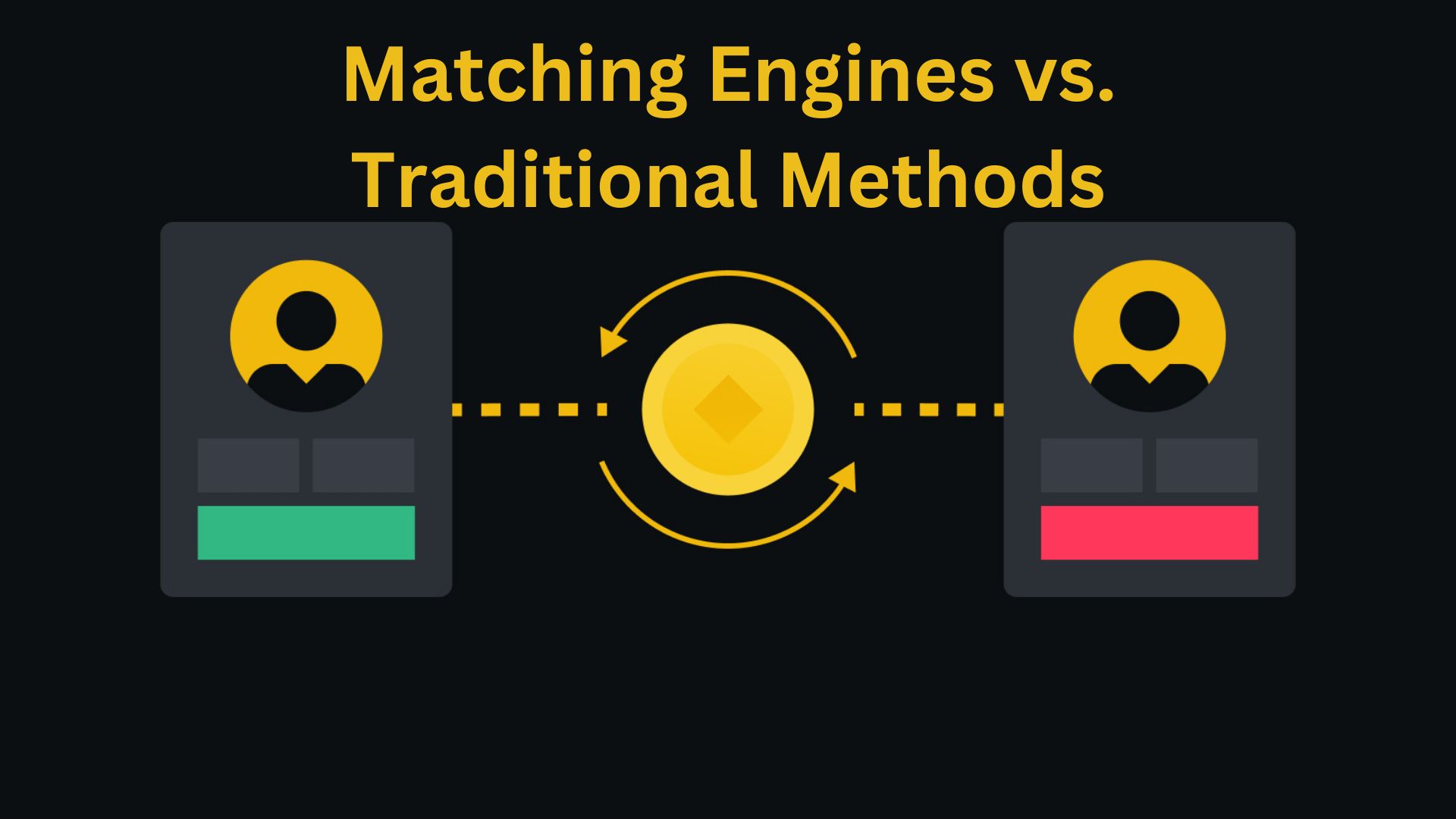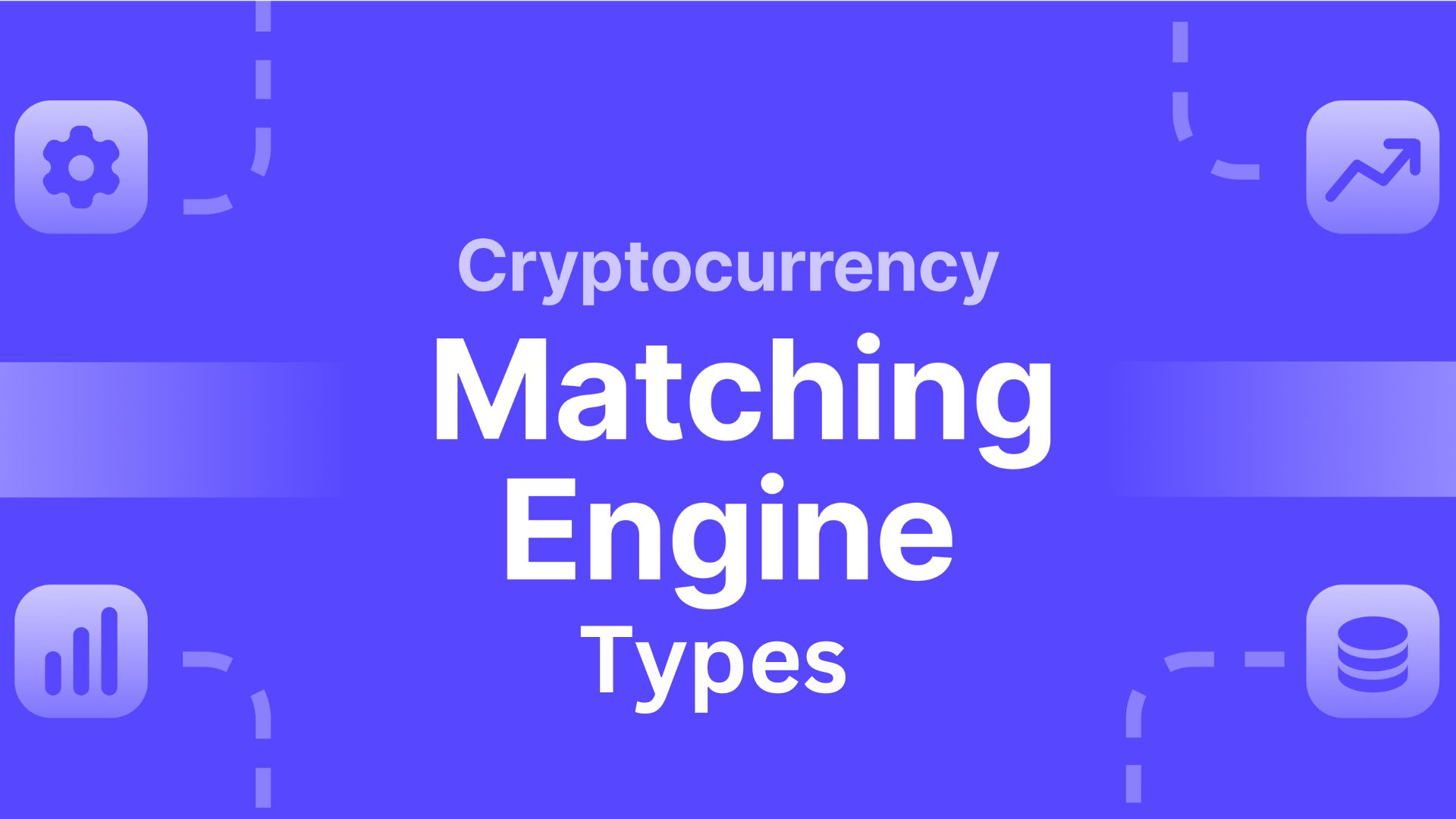The Role of Matching Engines in Modern Trading

Matching Engines in Trading: 2024 Guide. Matching engines in crypto trading are the core technological infrastructure enabling the execution of buy and sell orders on cryptocurrency exchanges. These sophisticated systems rapidly pair buyers’ bids with sellers’ asks, facilitating efficient and seamless transactions in the volatile crypto market. They use complex algorithms to determine the best matches, ensuring liquidity and minimizing slippage. Matching engines must handle vast volumes of transactions with high speed and reliability, even during market peaks. They support various order types, including market, limit, and stop orders, playing a crucial role in the trading ecosystem by optimizing order execution and contributing to market stability and transparency.
What Is a Matching Engine?
Financiers rely on matching engines, which are essentially complex software systems, to connect buyers and sellers. Think of it as the trade equivalent of a matchmaker; it connects buyers and sellers. The main goal is facilitating fast and efficient trade execution, leveling the playing field for all market players.
Matching Engines vs. Traditional Methods
 Matching Engines vs. Traditional Methods
Matching Engines vs. Traditional Methods
Trading and order matching mainly relied on manual operations and phone calls. Compared to the modern, highly automated matching engine systems, these older methods were far more labor-intensive and open to human mistakes. Trades can be executed quickly and equitably by using modern matching engines.
How Does a Matching Engine Work?
Envision a lively marketplace where vendors are yelling out prices and deals. This anarchy gives way to a serene order book in the digital world. Orders are recorded in the order book when traders intend to purchase or sell. The matching engine then analyses the terrain and links compatible orders based on its findings.
The matching algorithm, responsible for the operation’s logic, adheres to rules that specify the priority. The so-called “first-in, first-out” (FIFO) rule is among the most prevalent. Just like standing in line at the supermarket, orders that come in first will be given priority. A different method, known as “Pro-Rata,” prioritizes more oversized orders so that they can access a more significant amount of the available liquidity.
Order Matching Algorithms
Order matching algorithms define the functioning of a matching engine. Let’s peek into a few examples:
First-in, first-out (FIFO)
Traditional order prioritization algorithms like FIFO and “first-come, first-serve” (FCFS) use factors like price and time of creation to determine order priority. To maintain equity in execution, the order that came first is matched first when multiple orders are created at the same price.
Pro-Rata
A new twist is introduced by the Pro-Rata algorithm, which prioritizes larger orders. So, if two orders with different prices and quantities are pending at the exact moment, the order with the more significant amount will be filled first.
Time-Weighted Average Price (TWAP)
To get at the average price, algorithms based on TWAPtake all the orders placed within a given time frame and progressively execute a series of trades. By dividing large orders into smaller ones, TWAP algorithms can lessen their influence and bring them down to the initial order’s average price.
Types of Matching Engines
 Types of Matching Engines
Types of Matching Engines
Centralized matching engine
Centralized matching engines provide lightning-fast, highly efficient real-time matching. Perfect for heavy-traffic exchanges where instant matching is paramount, their centralized server architecture allows lightning-fast order processing.
Decentralized matching engine
The decentralization of matching engines and their reliance on a peer-to-peer network makes them more resistant to assaults. They help create a safer trading environment but may be slower and less efficient than centralized systems. They are safer than alternatives because there is no central server to compromise data potentially.
Choosing the Right Matching Engine
Speed
Centralized engines quickly match orders on platforms with significant trading volumes. On the other hand, a decentralized engine that uses a peer-to-peer network might not function as fast.
Security
A decentralized engine, running on a distributed network, provides greater resilience against possible breaches than a centralized engine, which relies on a single server and is thus more vulnerable to attacks.
Fees
Centralized engines’ more significant infrastructure and resource needs usually result in higher fees. Conversely, costs are often lower for decentralized engines that operate on a peer-to-peer network.
Why Matching Engines Matter
Milliseconds matter in the fast-paced trading industry, where matching engines are crucial. This is why they are essential:
Efficient order execution
Quick order fulfillment is a benefit of a high-quality matching engine. Particularly in a world where every millisecond matters, the capacity to handle orders quickly is essential.
Fairness and transparency
Fairness is maintained, and trade execution is made more transparent via matching engines, which use predetermined algorithms to dictate order priority. Traders have faith that their orders are handled relatively according to predetermined protocols.
Market liquidity
Matching engines help increase market liquidity by facilitating transactions between buyers and sellers. This liquidity, made possible by efficient order matching, can lead to a more responsive market environment.
Conclusion
Modern trading platforms owe a great deal to the accuracy and complexity of matching engines, which are frequently disregarded. Traders can conduct business quickly, fairly, and efficiently thanks to a matching engine, the invisible hand that keeps the market running smoothly.



































